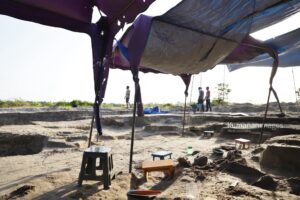Procedural Posture
In conformity with law, the plaintiff published the petition for name and gender change in a newspaper and had the petition posted. The solicitor general entered his appearance, and authorised a provincial prosecutor to appear on his behalf. At the hearing the plaintiff testified and presented the expert witness testimony of Dr Michael Sionyon of the Department of Psychiatry who maintained that the plaintiff’s gender choice was permanent and that recognition would be advantageous to the plaintiff. The trial court granted the petition, and the solicitor general entered a petition to the Second Division court seeking a reversal.
Facts
The plaintiff was registered at birth as female, but developed secondary male characteristics over time. He was diagnosed with congenital adrenal hyperplasia and displayed both male and female characteristics. At age six the plaintiff was diagnosed with clitoral hypertrophy and small ovaries; at age thirteen the ovaries had minimised, he had no breasts and no menstrual cycle. He stated that in his mind, appearance, emotions and interests he was a male person, and therefore asked that his birth certificate sex be changed to male, and that his name be changed from Jennifer to Jeff. A medical expert testified that the plaintiff was genetically female but that, because the plaintiff’s body secreted male hormones, his female organs had not developed normally. He further testified that the plaintiff’s condition was permanent and recommended the change of gender because the plaintiff had adjusted to his chosen role as male and the gender change would be advantageous to him.
Issue
Whether the court should recognise a new name and gender identity to reflect the chosen gender of an intersex person who was raised as the opposite gender.
Domestic Law
Rules of the Court, 103 (regulating name change) and 108 (regulating the cancellation or correction of civil registry entries).
Comparative Law
MT v. JT, New Jersey Superior Court, United States, 1976 (“It has been suggested that there is some middle ground between sexes, a ‘no-man’s land’ for those individuals who are neither truly ‘male’ nor truly ‘female’”).
Reasoning of the Court
The Court first discussed the Wikipedia definition of intersex and remarked on the diverse treatment of intersex individuals internationally. In quoting the reference in MT v. JT’s to a gender ‘no-mans land’, the Court noted that “[T]he current state of Philippine statutes apparently compels that a person be classified as either a male or as a female, but this Court is not controlled by mere appearances when nature itself fundamentally negates such rigid classification”.
The Court stated that it was of the view that “where the person is biologically or naturally intersex the determining factor in his gender classification would be what the individual, like respondent, having reached the age of majority, with good reason thinks of his/her sex.” Because Cagandahan thought of himself as a male and his body produced high levels of androgen, there was “preponderant biological support for considering him as being male.” According to the Court, for intersex persons gender classification at birth was inconclusive. “It is at maturity that the gender of such persons . . . is fixed.”
In this case, the Court considered that the plaintiff had allowed “nature to take its course” and had not interfered with what “he was born with”. By not forcing his body to become female, he permitted the male characteristics of the body to develop. Thus the Court rejected the objections of the solicitor general and held that, where no law governed the matter, the Court should not force the plaintiff to undergo treatment to reverse his male tendencies.
The Court held that where the individual was biologically or naturally intersex, it was reasonable to allow that person to determine his or her own gender.
Republic of the Philippines v. Jennifer Cagandahan, Supreme Court of the Philippines, Second Division (full text of judgment, PDF)




